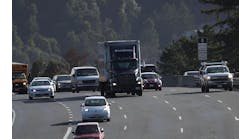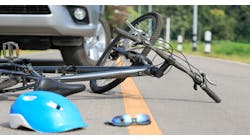From the “Didn’t see that coming” files, two seemingly unrelated stories but with one common moral: Lawyers love the mysteries of logistics. One case involves dust that’s allowed to accumulate in a workplace, therefore leading to an explosive environment. The other involves a well-known comedian whose car was rear-ended by a Walmart truck and before the dust settled on this case we had an explosive environment.
Case 1 involves Babine Forest Products, in Burns Lake, British Columbia. Here, on January 20, 2012, a combustible dust explosion and subsequent fire killed two workers, injured 20 more, and caused immense physical damage to the facility. Investigation found that a series of circumstances left the door open for a dust explosion. First, beetle-infestation made the wood they were handling dryer and therefore dustier. Second, cold temperatures caused burst water pipes and a clogged wood waste removal systems—resulting in more fuel for a fire. These two elements were enough to lead to fine dust falling on and infiltrating a V-belt guard on a drive motor reducer assembly for a waste conveyor. The dust fire was initiated by heat from “friction within the motor-reducer V-belt guard,” the investigation by WorkSafeBC concluded. Constant friction ignited the sawdust which began to smolder and eventually resulted in a flaming fire. At some point, the flames from the fire ignited airborne dust—perhaps from another “landslide” of dust off the surface of the accumulation piles above—to initiate a deflagration resulting in an explosion.
Employees at this plant learned a painful lesson: dust isn’t just a housekeeping issue. Who could have anticipated that a dusty conveyor could have set off a deadly explosion? You can bet lawyers will be studying this case carefully for precedents as they fight the $1 million fine. The Globe and Mail newspaper quotes the company’s lawyers as calling the investigation “unprofessional and inconsistent with established forensic fire examination techniques that are well established.” Their letter adds, “the finding as to the ignition source was not supported by the evidence and was inaccurate and flawed.”
Case 2, Tracy Morgan vs. Walmart. The former "Saturday Night Live" and "30 Rock" star suffered a broken leg and broken ribs when his limousine van was hit from behind June 7 by a Wal-Mart truck on the New Jersey Turnpike. The comedian’s friend, fellow comedian Jimmy Mack, was killed and two others were injured. Morgan’s complaint against Walmart is that the company should have known that its driver had been awake for over 24 hours and that his commute of 700 miles from his home in Georgia to work in Delaware was "unreasonable." It also alleges the driver fell asleep at the wheel.
The complaint continues: "As a result of Walmart’s gross, reckless, willful, wanton, and intentional conduct, it should be appropriately punished with the imposition of punitive damages."
Morgan's lawsuit seeks a jury trial and punitive and compensatory damages.
The federal transportation safety investigators said Walmart’s driver was traveling 65 mph in a construction zone where the speed limit was lowered to 45 mph. The connection to logistics? Hours-of-Service rules will be in the media spotlight as this case goes on. Is Walmart likely to pay Morgan handsomely? Probably not over hours-of-service, says Enan Stillman, transportation lawyer with Graham & Jensen LLP, and a member of MH&L’s editorial advisory board.
“Tracy Morgan’s lawsuit against Walmart seems to be a simple personal injury case,” he told me. “In all likelihood, the case will settle prior to trial and Mr. Morgan and his fellow passengers will receive very large settlements.”
What about hours-of-service rules?
“Ultimately, it is irrelevant whether Walmart’s driver, Kevin Roper, was fatigued from driving long hours, or whether the truck’s collision avoidance system failed to properly activate the brakes before impact,” Stillman added. “At the end of the day, when a party rear ends another vehicle, it is invariably negligence. Absent extraordinary circumstances, if you are involved in a rear end collision, you will be cited for following too closely. The issue then becomes not who is at fault but rather how much should be paid to make the injured party whole. Here, it will be difficult to determine damages because it is hard to quantify an entertainer’s lost income and consequential damages.”
Does that mean hours-of-service will be off the table for this one? Not while there are lawyers and special interests for whom this vehicle still has some gas.
“While Mr. Morgan may have the last laugh with regard to damages, others will use this serious matter to promote an agenda,” Stillman concluded. “For example, this accident has been cited by politicians and pundits as an example of why stringent hours-of-service requirements are necessary. If politicians use this accident to sway public opinion, the end result would be joyful for intermodal providers and tragic for brokers and trucking companies.”
Who says logistics is boring?




